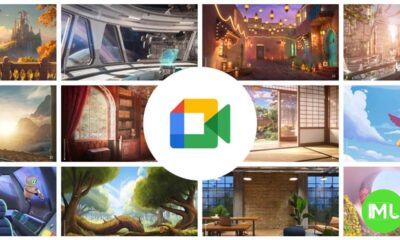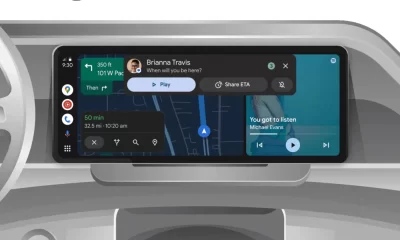Google’s new Gemini utilities extension and Quick Share introduction: Everything You Need to Know

Google is rolling out two exciting updates for Android devices, enhancing how you control your phone and making device sharing more user-friendly. The new Gemini Utilities Extension aims to simplify phone management through a range of commands, while Quick Share will now become part of the initial setup on new Android devices, giving it much-needed visibility.
Gemini Utilities Extension: Transforming Device Control
Initially previewed at Google I/O 2024, the Gemini Utilities Extension offers a new way for users to manage their devices and apps using voice and text commands. By integrating with the Gemini AI assistant, the extension replaces Google Assistant’s role for certain tasks, providing a smoother, more native experience. Although it’s gradually rolling out in English, the extension is packed with versatile features. Here’s what it can do:
Key Features
- Set and Manage Alarms & Timers: Gemini can set, snooze, and delete alarms, or start a timer for activities, useful from the lock screen. It also supports third-party clock apps but has extended functionalities with Google’s Clock app.
- Quick Controls for Settings and Apps: You can turn on/off settings like Do Not Disturb, Battery Saver, Bluetooth, or the flashlight with a simple command. Checking battery level or phone volume is just as easy, while actions like power off and restart can also be voice-activated.
- Media and Camera Control: Whether it’s taking a timed selfie, capturing screenshots, or pausing and replaying media, Gemini handles it all through simple commands. It even lets you like or skip songs without navigating manually.
- Browse Screenshots: With commands, you can search and view specific screenshots within the Pixel Screenshots app, ideal for quick access to saved visuals.
- Perform Multiple Actions in One Prompt: Gemini can combine actions in a single command for faster multitasking, like “Turn media volume to 50%, reduce brightness to 30%, and turn on battery saver.”
Real-Life Scenarios
For instance, if you want to set a timer to focus on work and have Gemini play a song in the background, you can prompt it with “Set a 30-minute timer and play my work playlist.” This seamless interaction across commands demonstrates how Gemini simplifies everyday routines on Android.
Quick Share: A Better Way to Share Files on Android
Quick Share, also known as Nearby Share, has made it easy for users to wirelessly transfer files across devices like Android phones, ChromeOS tablets, and even Windows PCs. Google is now mandating that Android devices introduce Quick Share during the initial setup, following Pixel’s example.
Key Features
- Ease of Use: Quick Share allows sharing of photos, videos, files, and URLs to other nearby Android devices and compatible systems. It uses proximity-based detection, making file transfer straightforward without relying on email or apps.
- Privacy Options: When users are introduced to Quick Share during setup, they can adjust privacy settings, choosing visibility preferences for who can see their device nearby.
- Broader Accessibility: Quick Share now appears as a default setting on devices running Android 15 or higher, with OEMs incorporating a setup screen to guide users through the feature.
Aiming for Wider Adoption
This requirement for OEMs, or manufacturers of Android devices, reflects Google’s goal to make Quick Share as familiar and user-friendly as AirDrop on Apple devices. With new Android 15 devices featuring a Quick Share introduction page, awareness and usage of the feature are likely to grow.
What This Means for Android Users
Google’s rollouts with the Gemini Utilities Extension and Quick Share onboarding highlight a push toward integrated, user-friendly functionality across Android devices. Gemini’s versatile command control offers convenience that replaces manual phone actions, while Quick Share’s setup screen on Android 15 will ensure that new users don’t miss out on easy, secure file sharing.
These updates signal Google’s commitment to making Android a more cohesive, AI-driven ecosystem—one that anticipates your needs and enables smoother device interactions, whether for routine tasks or real-time sharing.
Google Meet gets a fresh new look with Material 3 design

Google Meet is getting a big update to its look, thanks to the new Material 3 design. This change brings a cleaner and more modern style to the video calling app, making it easier and more enjoyable to use.
With Material 3, Google Meet now has rounder buttons, softer colors, and better spacing between elements. The main controls, like the microphone, camera, and end call buttons, are now larger and easier to tap. The icons and text are also clearer, which helps users find what they need quickly during a call.
Another improvement is the new “expressive” color system. This feature lets the app’s colors match your device’s wallpaper or theme, giving each user a unique and personalized experience. The changes also make Google Meet more accessible, as the new design is easier to read and use for everyone, including people with vision difficulties.
These updates are rolling out to both web and mobile versions of Google Meet. Google says the new look will help people feel more comfortable and focused during their meetings. Overall, the Material 3 update makes Google Meet not only look better but also work better for all its users.
Android
Easy ways to change Android Auto’s look with light and dark themes

Android Auto is a helpful tool that lets you use your phone’s apps safely while driving. It connects your phone to your car’s screen, making it easier to use maps, music, and calls. One of the features many people like is the ability to change how Android Auto looks by switching between light and dark themes.
How to switch between light and dark themes
Android Auto offers two main themes: light and dark. The light theme uses brighter colors, which can make the screen easier to see during the day. The dark theme uses darker colors, which can be more comfortable for your eyes at night or in low light.
To change the theme, follow these steps:
- Open the Android Auto app on your phone.
- Go to the settings menu.
- Find the “Theme” option.
- Choose between “Light,” “Dark,” or “Set by car” (this lets your car decide the theme based on the time of day or your car’s settings).
Why themes matter
Using the right theme can make driving safer and more comfortable. The light theme is good for bright days, while the dark theme helps reduce glare at night. Having these options means you can pick what works best for you, making Android Auto easier to use in any condition.
In short, Android Auto’s theme options are simple to use and help you drive more safely by making the screen easy to see, no matter the time of day.
Google Drive and Files by Google get fresh updates for easier use

Google is rolling out some helpful updates to two of its popular apps: Google Drive and Files by Google. These changes are designed to make managing your files and watching videos much smoother.
First, Google Drive is getting a new video player. Now, when you upload a video to Drive and open it, you’ll notice a fresh look that matches Google’s latest design style. The controls, like play and pause, are easier to use and look cleaner. This update makes it simpler to watch videos directly in Drive without needing to download them first.
Meanwhile, the Files by Google app is also getting a makeover. The app is adopting Google’s Material 3 design, which means it looks brighter and more modern. The buttons and menus are easier to see and use, making it simpler to find, move, and organize your files. There are also new color options and improved icons, so everything feels more user-friendly.
Both updates show Google’s commitment to making its apps more helpful and enjoyable to use. Whether you’re watching videos in Drive or sorting files on your phone, these changes aim to save you time and make things less complicated. If you use these apps, keep an eye out for these new features—they should arrive soon!
-

 Apps1 year ago
Apps1 year agoGboard Proofread feature will support selected text
-

 News1 year ago
News1 year agoSamsung USA crafting One UI 6.1.1
-

 Apps12 months ago
Apps12 months agoGoogle Contacts app testing new Besties Widget
-

 AI12 months ago
AI12 months agoGoogle Pixel 9 Pro may come with a complimentary one-year Gemini Advanced subscription
-

 News1 year ago
News1 year agoBreaking: Samsung Galaxy S22 may get Galaxy AI features
-

 Apps12 months ago
Apps12 months agoGoogle working on a new video editing feature for its Photo app
-

 Apps12 months ago
Apps12 months agoGoogle Maps lets you report traffic jams and accidents on Apple CarPlay, but not on Android Auto
-

 Apps12 months ago
Apps12 months agoGoogle Messages app will transform MMS chats into RCS










